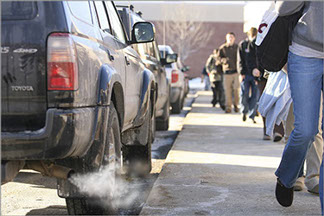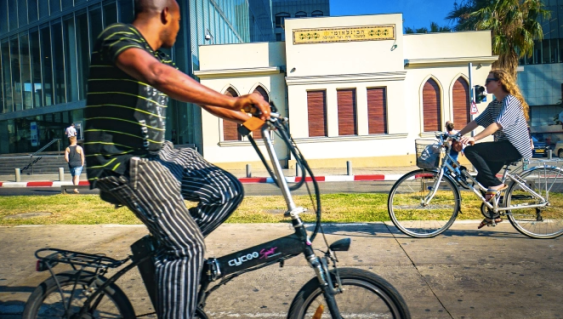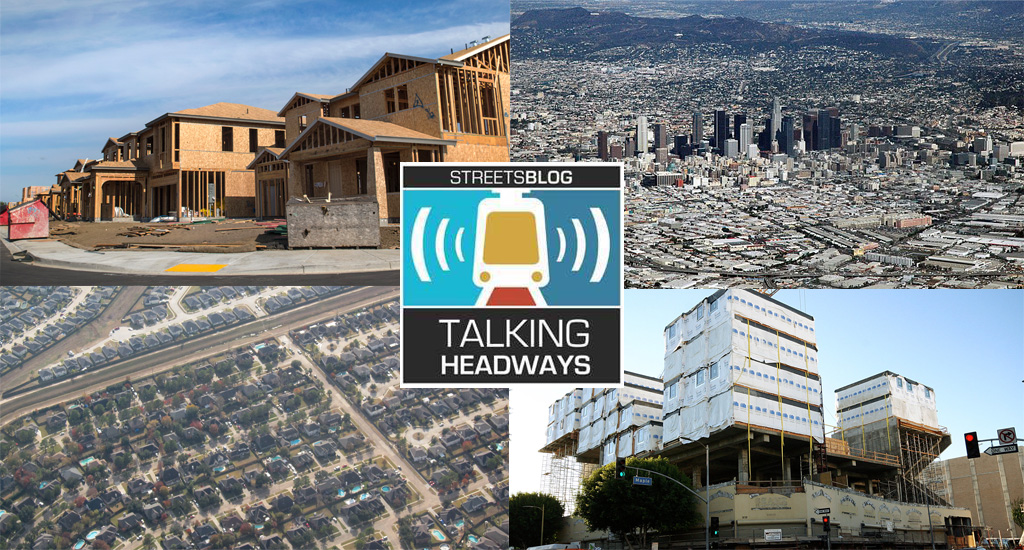Lately, American schools have been pretty responsive to public health and safety threats facing children. Witness the rise of peanut butter bans or the dwindling number of vending machines in schools.

But schools haven't been very successful at tackling what is arguably a much bigger threat to children's health: air pollution caused by driving. Asthma is the most common chronic disease among children. Car exhaust can trigger attacks and may cause asthma itself, and schools are where children tend to be especially exposed. In school zones, levels of air pollutants "may significantly exceed community background levels, particularly in the presence of idling school buses," according to researchers with the Cincinnati Children's Hospital Medical Center.
Every morning and afternoon at schools around the country, pick-up and drop-off times are free-for-alls of mindless idling, with tailpipes spitting poisonous chemicals into the air children breathe. "Monitoring at schools has shown elevated levels of benzene, formaldehyde, acetaldehyde and other air toxics during the afternoon hour coinciding with parents picking up their children," according to the U.S. EPA.
"One major issue with air pollution is that it is invisible," says Anneka Whisker of the group Moms for Clean Air. "Out of sight, out of mind."
But it doesn't have to be that way. Here are four things schools can do to help reduce pollution from idling and asthma.
1. Encourage active transportation
To reduce air pollution at school, make walking and biking as safe and practical as possible.
According to the U.S. EPA [PDF], school strategies aimed at boosting active transportation can have a real impact. Traffic volumes near Roosevelt Middle School in Eugene, Oregon, for instance, dropped 24 percent after the addition of walking and biking paths, the agency reports.
The EPA also has guidelines for school siting [PDF]. It recommends choosing a site that many students can walk to and that provides good active transportation opportunities, not a far-away site that would require longer bus rides or drives.
2. Establish anti-idling zones near schools
Encouraging parents to shut off the engine can help make schools healthier places. The EPA provides an "idle-free toolkit," complete with signs, brochures and parent pledges, to schools interested in improving air quality.
Reducing idling around schools can have a big effect. Researchers at the Cincinnati Children's Hospital found idle-free zones could reduce carbon pollution by 63 percent and particulate pollution by 74 percent.
Although the EPA encourages idle-free school zones, it's not clear how many schools participate in its initiative. In West Virginia, for instance, the state EPA reports that just 12 schools have "idle-free zones."
3. Don't let school buses idle unnecessarily
In total, 17 states have rules that limit idling for school buses or other vehicles in school zones, according to Scientific American. California, which has prohibited school bus idling since 2003, is a leader in this respect. But across the nation, these rules are poorly enforced.
The Ohio EPA recommends school district policy should limit idling by buses to less than five minutes, even in cold weather, except in a few circumstances. Bus drivers should be notified of the policy by letter, and it should be enforced by penalizing drivers who break the rules.
"Bus routes should be timed so children and drivers do not need to spend a lot of extra time on the bus when it is not en route, particularly in hot or cold weather. In addition, auxiliary heaters can be purchased and installed to keep the cabin comfortable," the agency recommends.
4. Retrofit school bus engines for cleaner operation
About 25 million American school children ride the bus to school every day. But diesel engines are enormous polluters. Worse, in school buses a lot of the pollution gets trapped inside. According to the Environmental Defense Fund, studies have found that fine particle pollution inside school buses can be five to six times higher than ambient air levels.
The federal government and many states offer grants to retrofit school bus engines to dramatically reduce emissions. Some schools have also reduced the replacement timeline for buses in order to convert to a newer, cleaner-running fleet, the EPA reports.




